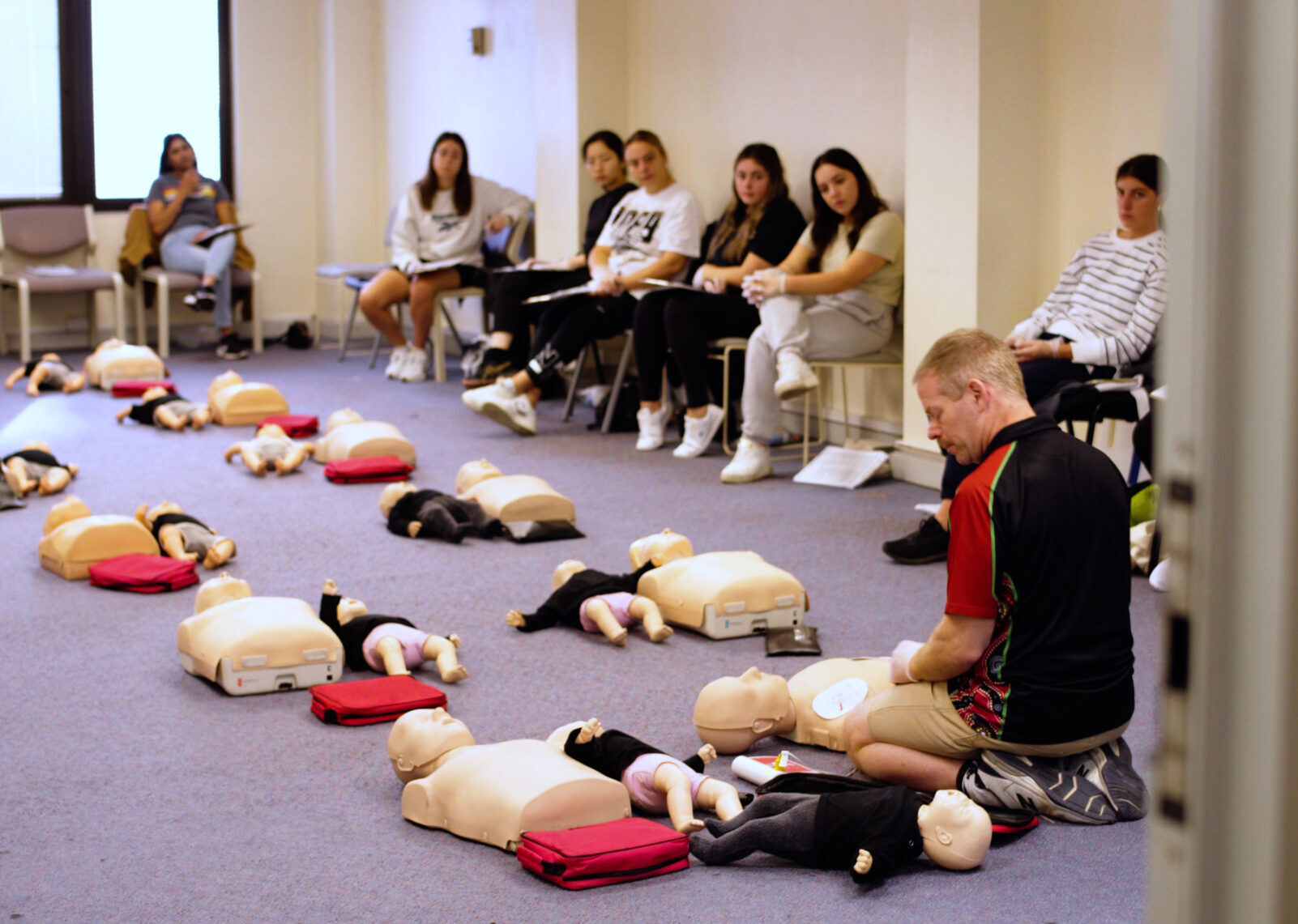For many people, First Aid is just a box to tick on a job application, when in reality, it can be the difference between life and death.
Former lifeguard Paul Gaertner, who now works as a First Aid instructor for FirstAidPro, had a chat with us about the importance of First Aid training and his experiences within the industry.
“I was a lifeguard for many years. That’s how I got into the First Aid area. I had an accident about 20 years ago where I broke my neck. The only reason that I’m still walking around is the people that dealt with me, the first responders immediately at the site, otherwise I’d be sitting in a wheelchair having a lot of issues.”
Stay up to date with what’s happening in and around the region here.
Paul, who has worked with FirstAidPro for over 6 years now, tells us how students often come back with stories about the effect First Aid training has had on their lives. He emphasises how an emergency situation can happen at any moment, and knowing the correct procedure can save lives.
“A friend of mine, she was laying in bed with her husband (42 years old) and she rolled over and he was as cold as anything, he was having a heart attack. She’d only done the class a couple of weeks before. She dragged him onto the ground and started doing CPR. The guy’s alive because she did the First Aid class.”
“It’s remarkable when you see a person (student) a year later and they tell you their mum (or) their dad had a heart attack, and they’ve saved their life because of the training that you’ve done for them. It makes it worthwhile.”
FirstAidPro is a Registered Training Organisation specialising in First Aid Training Nationally, delivering high-quality First Aid Courses tailored to meet your specific requirements.
“The students rock up at half past 8, have a chat before we start and then we go through the process. We do CPR first, then we do the babies, then we do children. It’s just a very relaxed atmosphere. I know that people come in and they’re tense (they’ve had a death in the family etc), they’re really stressed and think it’s gonna bring it all back to them. We deal with that in a very heartfelt, kind way – to make that person feel comfortable doing it.”
Paul describes how at FirstAidPro they “try to make the class engaging.”
“A lot of our trainers use their own real life experiences to make it real. We don’t just talk about what you need to do, we tell you why you need to do it. I’ve always believed that if a person knows why they’re doing something, they’re more inclined to do it than if you just say, ‘this is what you need to do’. That’s what I think FirstAidPro does really well, we engage.”
Paul’s role at FirstAidPro focuses specifically on child First Aid.
View this post on Instagram
“Parents come back time and time again with stories about how their children have been choking and they’ve managed to save them because they’ve done the First Aid and they know how to deal with choking infants.”
In the summer just passed there were 88 recorded drownings across aquatic locations (beach, pool, rivers etc) in the nation. Paul states how “it’s something that can be avoided by just plain and simply knowing how to do basic CPR.”
“We live in a modern era. The kids are in the pool, and mum and dad are sitting in the pool area, supposedly supervising, but they’re on their iPads or their phones. They think that when children drown they make a lot of noise. People that drown don’t make a lot of noise, especially children. They just sink to the bottom and there’s no noise at all.”
In the current climate, Paul points out how we can access this First Aid knowledge anywhere and everywhere. Paul himself uploads videos to social media. “I’m on Facebook demonstrating CPR.” However, he also states that “the best thing to do is to book into a First Aid class so you’ve got a qualified instructor showing exactly how you do it.”
“Any CPR is better than no CPR but CPR done correctly is much more effective.”
When asked how often we should complete a refresher course, Paul states that “CPR itself, people should do every 12 months. The reason we like people to do it every 12 months is because the chances of you using it are remote, but if you haven’t done it for three years and then you have to do it, you’re just not going to remember it.”
For many people, the prospect of providing CPR in an emergency situation is extremely daunting. However, Paul reassures us that this is a normal reaction.
“We generally find that people are petrified of doing it but when you actually have to do it, the fight or flight part of your body comes in (and you do it). The biggest thing is to get onto triple zero quickly. If you panic (and) you can’t remember what you’re meant to do, you’re talking to an expert on the other end of the phone who will calmly talk you through the process of doing CPR.”
You can access more information about classes and important First Aid knowledge through the FirstAidPro website.
This article was made in partnership with FirstAidPro.

